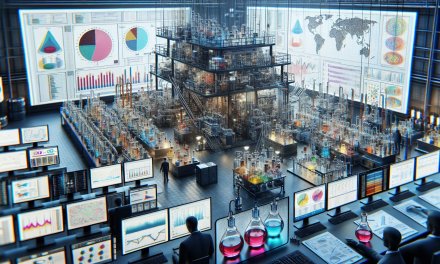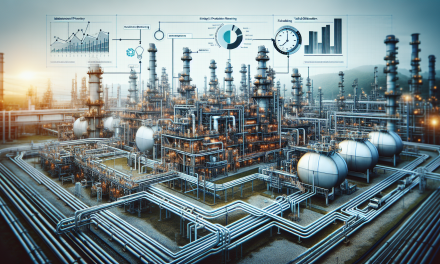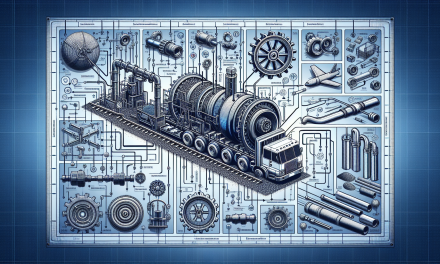Table of Contents
- 1. Introduction
- 2. What Is Facilities Management?
- 3. Key Components of Facilities Management
- 4. Importance of Facilities Management
- 5. Essential Skills for Facilities Managers
- 6. Current Trends in Facilities Management
- 7. Challenges in Facilities Management
- 8. Developing a Facilities Management Strategy
- 9. Future of Facilities Management
- 10. FAQs
- 11. Conclusion
1. Introduction
Facilities management involves overseeing an organization’s physical environment, ensuring it operates smoothly and efficiently. Although it may seem straightforward, the field requires a deep understanding of various elements, including building systems, project management, and stakeholder communications. Achieving mastery in facilities management can significantly enhance the efficiency and functionality of both small and large-scale operations.
2. What Is Facilities Management?
Facilities management refers to the comprehensive coordination of the physical workplace with its occupants. It encompasses various domains such as real estate management, maintenance, safety, and more. Effective facilities management integrates multiple disciplines to ensure a well-functioning environment tailored to support an organization’s missions and objectives.
2.1 The Scope of Facilities Management
The scope includes, but is not limited to:
- Maintenance management
- Space planning and management
- Environmental sustainability
- Safety and security operations
- Real estate and property management
3. Key Components of Facilities Management
Successful facilities management relies on key components that work cohesively. Understanding these aspects enhances the management process.
3.1 Infrastructure Management
Maintenance and Infrastructure: This refers to the physical components of a facility, such as HVAC systems, plumbing, wiring, and more. Regular assessments and maintenance are vital investments that prolong the lifespan of these systems.
3.2 Space Optimization
Space Allocation: Making sure that the available space fits the operational needs of the organization is crucial. This means optimizing layout, ensuring adequate storage, and facilitating employee engagement.
3.3 Safety and Compliance
Regulatory Framework: Every facility must comply with local and federal regulations regarding safety and health standards. Facilities managers play a key role in ensuring compliance, minimizing risks, and enhancing safety protocols.
4. Importance of Facilities Management
Facilities management is not just about keeping the lights on. Its importance spans across various dimensions, impacting productivity and operational efficiency.
4.1 Cost Efficiency
Efficient facilities management can lead to significant cost savings. By implementing strategic maintenance plans and minimizing downtime, organizations save money in both short and long-term scenarios.
4.2 Employee Satisfaction
Comfort in the workplace influences employee morale and productivity. A well-managed facility ensures that employees have a safe and pleasant work environment, leading to higher job satisfaction.
5. Essential Skills for Facilities Managers
To navigate the complexities of the field, facilities managers require a diverse skill set. Here are the core skills that contribute to success:
5.1 Leadership Skills
Strong leadership promotes effective team management and fosters a collaborative environment. Facilities managers must inspire dedication and efficiency among their teams.
5.2 Technical Proficiency
Having a solid understanding of building systems and maintenance protocols is essential. This technical knowledge allows facilities managers to oversee maintenance tasks accurately.
5.3 Communication Skills
Effective communication with stakeholders, contractors, and team members ensures everyone is on the same page. Facilities managers regularly interact with various parties, necessitating strong interpersonal skills.
6. Current Trends in Facilities Management
The facilities management landscape is continually evolving. Being aware of emerging trends ensures that one stays ahead of the curve.
6.1 Technological Integration
Integrating technology into facilities management processes has become standard. From smart building applications to maintenance management software, technology enhances efficiency and data accessibility.
6.2 Sustainable Practices
Environmental sustainability is a growing priority. Facilities managers are adopting practices that minimize energy consumption and promote green initiatives.
7. Challenges in Facilities Management
While facilities management plays a crucial role in organizational success, it presents various challenges.
7.1 Budget Constraints
Budget limitations often restrict maintenance and upgrades that could improve functionality. Facilities managers need to be resourceful in optimizing what they can achieve within financial boundaries.
7.2 Meeting Diverse Needs
Every facility hosts a unique set of occupants and activities. Balancing diverse expectations and needs without compromising service quality is a significant challenge.
8. Developing a Facilities Management Strategy
A strategic approach enhances the effectiveness of facilities management. Here’s how one can develop a successful strategy:
8.1 Assess Current Capabilities
Conducting a thorough assessment of existing systems, processes, and stakeholder needs can help identify gaps in facilities management practices. This assessment lays the groundwork for improvement.
8.2 Set Clear Objectives
Establish specific, measurable objectives that align with organizational goals. Having clear objectives helps in tracking progress and driving initiatives forward.
8.3 Utilize Resources Wisely
Make every effort to maximize available resources. Additionally, exploring learning materials can enhance understanding; consider checking out resources like Facilities Management Mastery: The Complete Course.
9. Future of Facilities Management
The future landscape of facilities management presents both opportunities and challenges. Here’s what to expect:
9.1 Rise of Smart Facilities
As technology advances, facilities will increasingly turn toward smart systems that provide real-time data and analytics, enabling proactive decision-making.
9.2 Emphasis on Health and Wellbeing
More organizations will prioritize health and well-being in their facilities management strategies. Creating healthy work environments boosts productivity and employee retention.
10. FAQs
10.1 What are typical responsibilities of a facilities manager?
A facilities manager typically oversees maintenance, safety compliance, space management, and resource allocation within a facility.
10.2 How can technology impact facilities management?
Technology enhances facilities management through automated systems, real-time data analysis, and improved communication, leading to increased efficiency.
10.3 What skills are necessary for success in facilities management?
Essential skills include leadership, technical proficiency, communication, and problem-solving abilities.
11. Conclusion
Mastering facilities management is a valuable undertaking that can lead to significant improvements across various domains within an organization. A well-structured facilities management approach not only enhances operational efficiency but also contributes to employee satisfaction and financial savings. As trends continue to evolve, staying informed and adaptable is key. For those looking to enhance their knowledge and skills in this field, additional resources such as facilities management workshops can provide valuable insights and strategies. Explore more on facilities management mastery through resources like Essential Strategies for Effective Corrosion Control, Mastering Oil and Gas Processing Flow Measurement Techniques, Mastering ISM Code for Maritime Offshore Safety, Unlocking Expertise in Gas Conditioning and Processing, and Mastering Project Management in Oil & Gas Estimating, Planning, and Scheduling Strategies. Being proactive in learning about facilities management can pave the way for success and sustainability in any organization.





